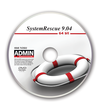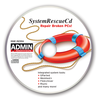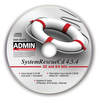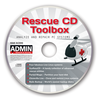
Photo by Karsten Winegeart on Unsplash
Six emergency CDs from antivirus manufacturers
Life Jacket
Because of its many security weaknesses, Microsoft Windows is considered particularly vulnerable to malware such as viruses, worms, and Trojans. However, because the operating system has more or less a monopoly on the desktop, administrators in the enterprise in particular are repeatedly confronted with malware damaging Windows workstations or even rendering them unusable.
In such cases, it usually makes sense to boot the damaged computers from a removable disk and then examine the mass storage devices with an external rescue system. For this purpose, many manufacturers of proprietary antivirus and anti-malware software provide free emergency CDs that use the manufacturer's own scanners to detect and remove malware on Windows systems. In many cases, they can also be used to repair damaged system files so that the Windows system can be used again.
The rescue CDs, available for download as ISO images on the websites of the respective manufacturers, are based on Linux derivatives and, in addition to the antivirus scanners, often contain free Linux tools for creating a backup of the target systems or managing mass storage devices.
Avira Rescue System
Avira [1], a company based in Tettnang on Lake Constance, Germany, has developed over the years into a global player in the field of system security, primarily for Windows computers. Avira offers various antivirus applications for products from Redmond but has continuously expanded its portfolio in recent years to include virtual private network (VPN) services, security solutions for mobile systems such as Android and iOS, and protection software for dealing with email.
The company also offers a freely available rescue system based on Linux called Avira Rescue System [2]. The system, offered as an ISO image, focuses on damaged
...Buy this article as PDF
(incl. VAT)
Buy ADMIN Magazine
Subscribe to our ADMIN Newsletters
Subscribe to our Linux Newsletters
Find Linux and Open Source Jobs
Most Popular
Support Our Work
ADMIN content is made possible with support from readers like you. Please consider contributing when you've found an article to be beneficial.







